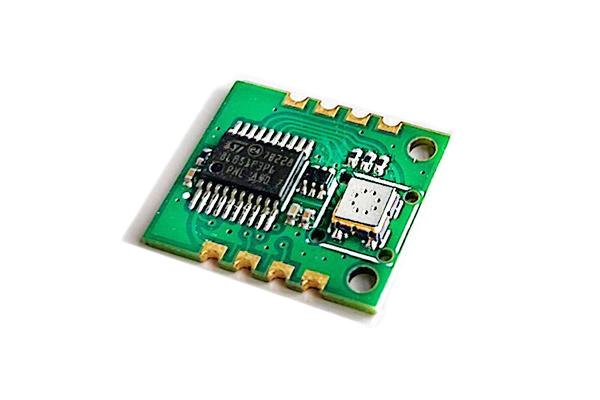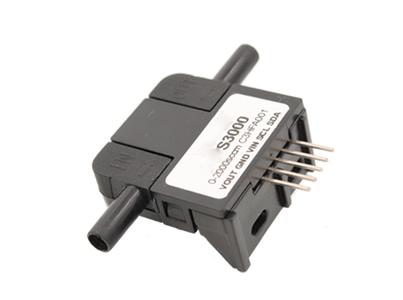
MEMS (Micro-Electro-Mechanical Systems) VOC (Volatile Organic Compounds) sensors are small, highly sensitive devices used to detect and measure the presence of VOCs in the air.
These sensors are commonly used in applications like air quality monitoring, environmental sensing, industrial safety, and smart home systems.
Rainbow's VOC gas sensor with Ultra low power consumption (<1mW), which Built-in Temperature compensation and external Humidity compensation.
(VOC+Temperature+Humidity)
Key Features of MEMS VOC Sensors:
Miniaturization: MEMS technology allows the sensors to be extremely small, which is advantageous for integration into compact devices.
Low Power Consumption: MEMS sensors typically consume very little power, making them suitable for battery-operated and portable devices.
High Sensitivity: These sensors can detect very low concentrations of VOCs, often in the parts-per-billion (ppb) range.
Fast Response Time: MEMS VOC sensors generally provide rapid readings, which is critical for real-time monitoring.
Durability: They are typically robust and capable of operating in various environmental conditions.
Applications
1. Indoor Air Quality MonitoringSmart Homes: MEMS VOC sensors are integrated into smart home devices like air purifiers, HVAC systems, and smart thermostats to monitor and maintain indoor air quality. They can detect harmful gases such as formaldehyde, benzene, and toluene, which are common in household products and materials.
Offices and Public Spaces: In offices, schools, and public buildings, these sensors help ensure a healthy environment by monitoring air quality in real time. This is crucial for maintaining occupant health and comfort.
Urban Pollution Monitoring: MEMS VOC sensors are used in outdoor air quality monitoring stations to detect pollution from vehicles, industrial activities, and other sources. They help track air quality trends and identify pollution hotspots.
Environmental Research: Researchers use these sensors in portable devices to study air quality in various environments, from urban areas to remote locations.
Hazardous Gas Detection: In manufacturing plants, chemical processing facilities, and laboratories, MEMS VOC sensors detect hazardous gases and VOCs that could pose health risks to workers. They are used in safety systems to trigger alarms and ventilation systems when dangerous levels are detected.
Leak Detection: These sensors are used to detect leaks of VOCs in pipelines, storage tanks, and other industrial equipment, preventing accidents and ensuring compliance with safety regulations.
Cabin Air Quality Control: In vehicles, MEMS VOC sensors are integrated into cabin air quality systems to monitor and control the concentration of harmful gases like carbon monoxide, formaldehyde, and other VOCs. This improves passenger comfort and safety.
Emissions Monitoring: They are also used in exhaust systems to monitor VOC emissions and ensure compliance with environmental regulations.
Wearables: MEMS VOC sensors are incorporated into wearable devices to monitor personal exposure to harmful gases, providing real-time feedback on air quality. This is especially useful for individuals with respiratory conditions or allergies.
Medical Devices: In healthcare settings, these sensors can be used to monitor air quality in hospitals and clinics, ensuring a clean and safe environment for patients.
Smartphones and Tablets: Some smartphones and tablets include MEMS VOC sensors to monitor the user's environment and provide alerts about poor air quality. This can be especially useful in urban areas with high pollution levels.
Portable Air Quality Monitors: These are small, handheld devices equipped with MEMS VOC sensors that allow users to check air quality wherever they go. They are popular among environmentally conscious consumers and those with health concerns.
MEMS VOC sensors are an important part of modern environmental and safety monitoring, combining advanced materials science with microscale engineering to provide reliable and real-time data on air quality. MEMS VOC sensors' versatility and small size make them ideal for a wide range of applications where air quality is a concern. Their ability to provide real-time, accurate data on VOC concentrations is crucial for improving health, safety, and environmental outcomes
LATEST NEWS
ONLINE CONSULTATION
For inquiries about our products or pricelist, please leave your email to us and we will be in touch within 24 hours.
GOT ANY QUESTIONS
If you have something on your mind, just let us know!
We are more than happy to answer all your inquiries.

For inquiries about our products or pricelist, please leave your email to us and we will be in touch within 24 hours.
Add: No.9999 Jingshi Road, Lixia District, Jinan City, Shandong Province, China
USA Research Center
Add:2455 South Rd, Poughkeepsie, NY 12601 USA
By clicking "Allow All", you agree to the storage of cookies on your device to enhance site navigation, analyze site usage and assist with our marketing efforts. Cookie Notice




